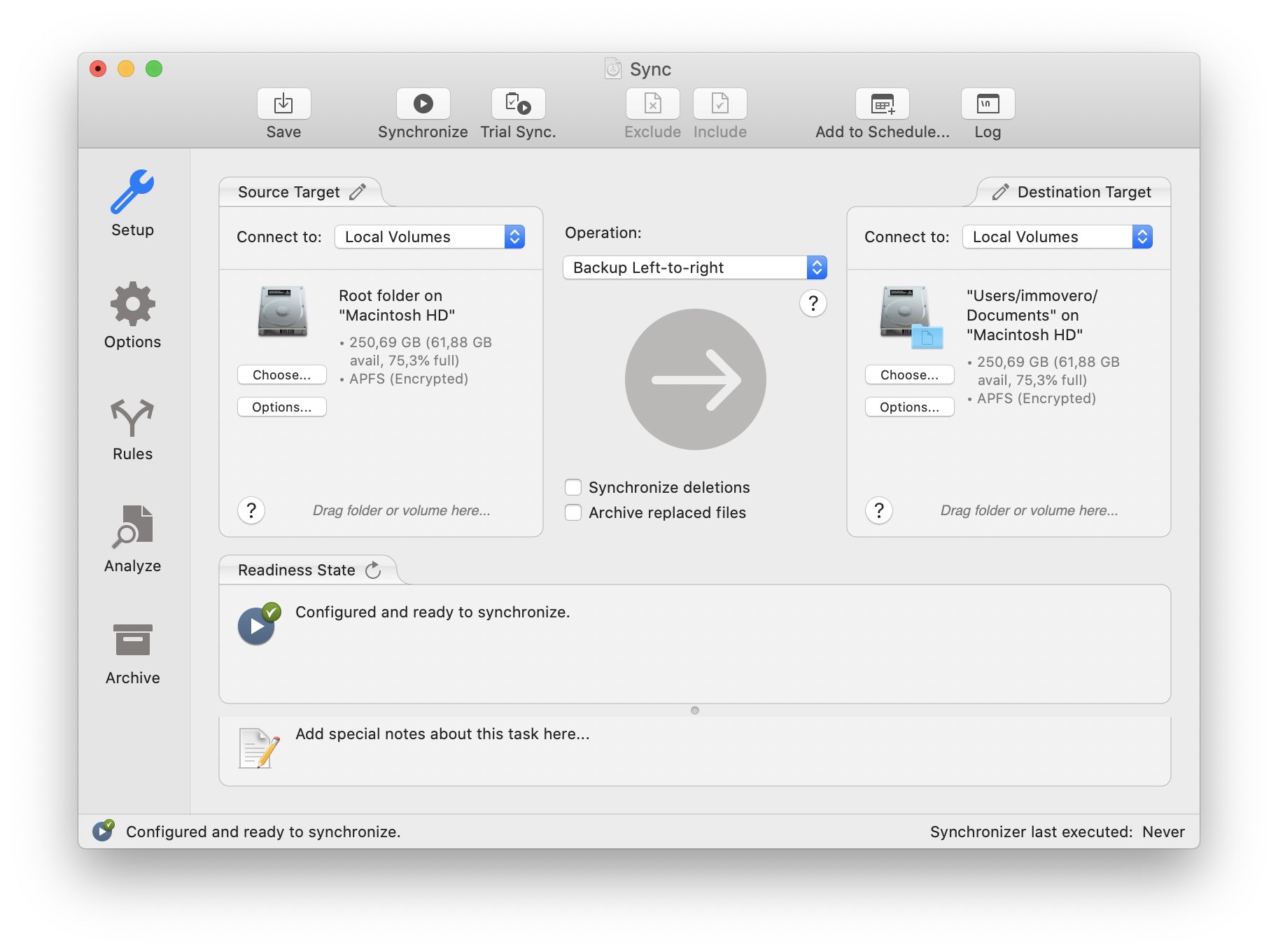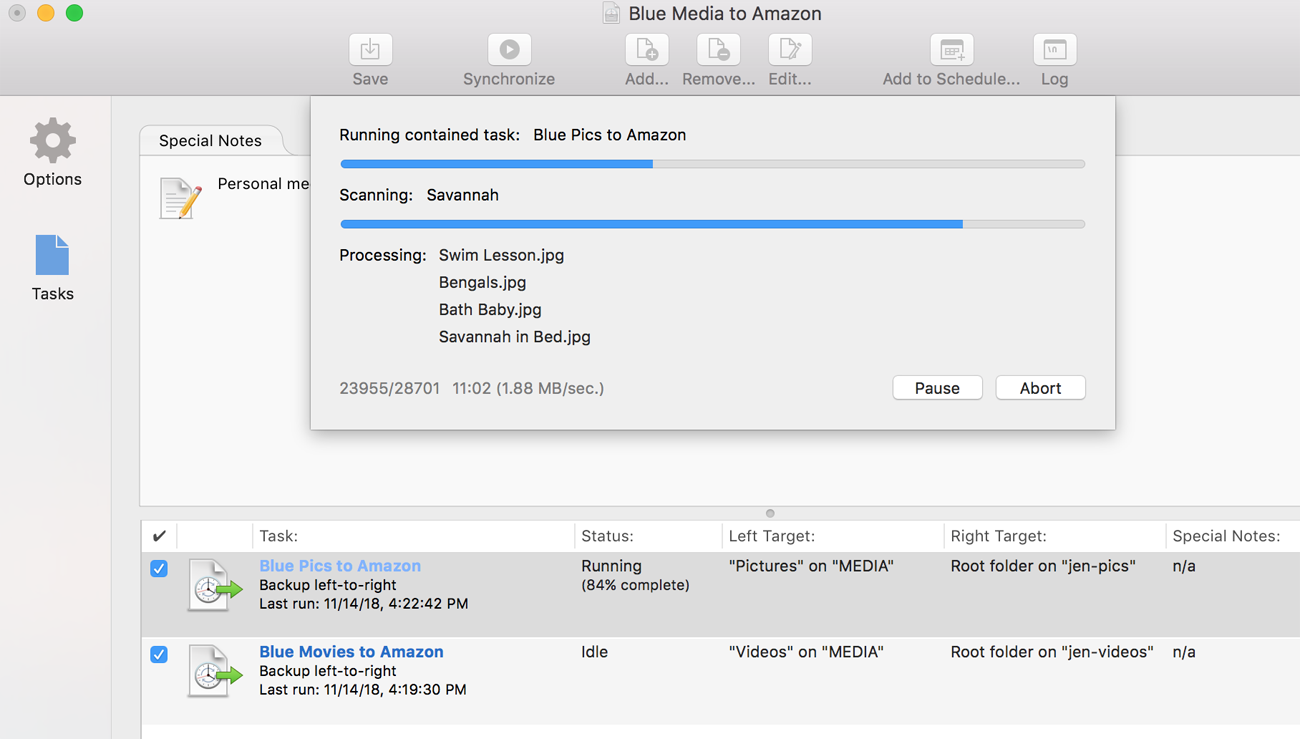

- #Chronosync sync over internet password#
- #Chronosync sync over internet mac#
- #Chronosync sync over internet windows#
This even means you can create a clone of your Mac hard drive directly onto any other computer system. This allows you to preserve all file attributes, including Mac-style filenames such as “Research ƒ”.


#Chronosync sync over internet windows#
Synchronizing to Windows or Linux file servers which do not support the HFS+ file system. In a shared environment, this will also allow the DMG to be mounted by another user. This will prevent the user from “tinkering” with the contents of the disk image. When backup is complete, we want to immediately unmount it. The “Eject disk image after synchronization” option is turned on because we will only be using this media for backup. In this instance, only ChronoSync can mount it. When on the keychain, any application can mount that disk image.
#Chronosync sync over internet password#
Supplying the encryption key is more secure than if the password is on the keychain. Otherwise you’ll be prompted each time the DMG attempts to mount. If your DMG is encrypted, you can supply your encryption key/password so that ChronoSync will automatically mount. If that fails, the DMG simply isn’t available. ChronoSync will attempt to automatically mount the DMG. The “Prompt if disk image is not mounted” option is disabled because we don’t want to be asked to insert the media if it is not mounted. In this case, we will instruct ChronoSync NOT to prompt for mount, attempt to mount the disk image, and to “eject” the disk image when synchronization is complete. You can thus specify the same mounting options you would have if this media resided on a removable device.ĭepending on the nature of your backup, you may not need or want to modify any of the mounting options. This is because ChronoSync identifies the disk image as removable media. You’ll notice that the “Options” button is available for the disk image target. Note: This password can be added to your keychain or in “Target Options” under the Setup Panel of the Synchronizer document. Encrypting your data will convert the data into unreadable code.


 0 kommentar(er)
0 kommentar(er)
